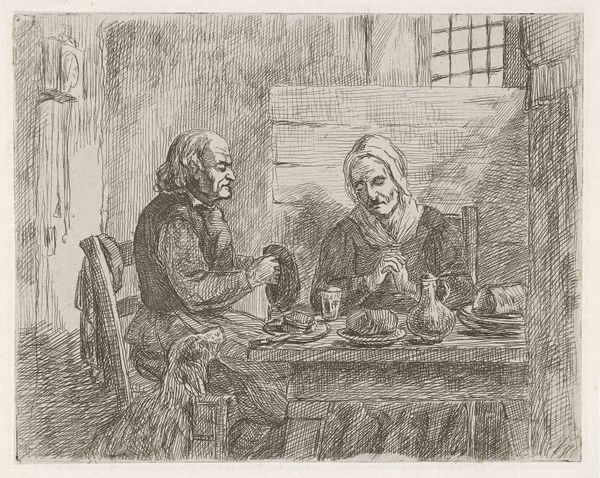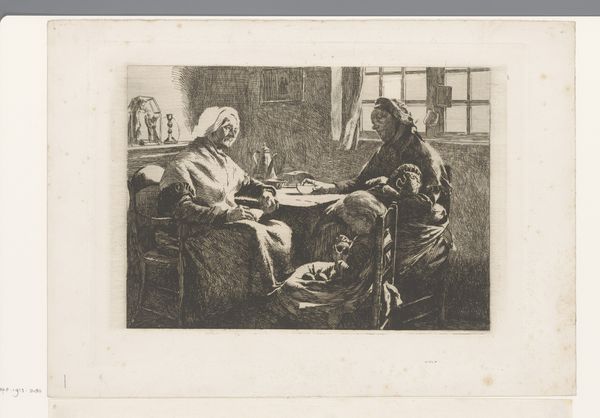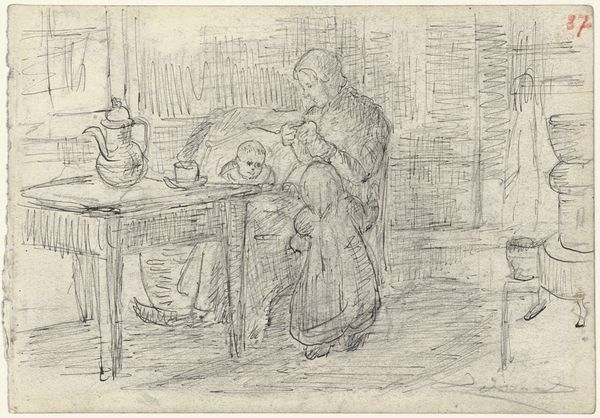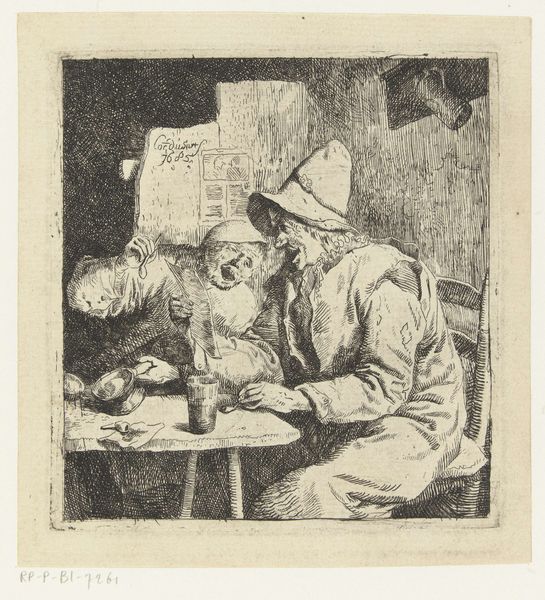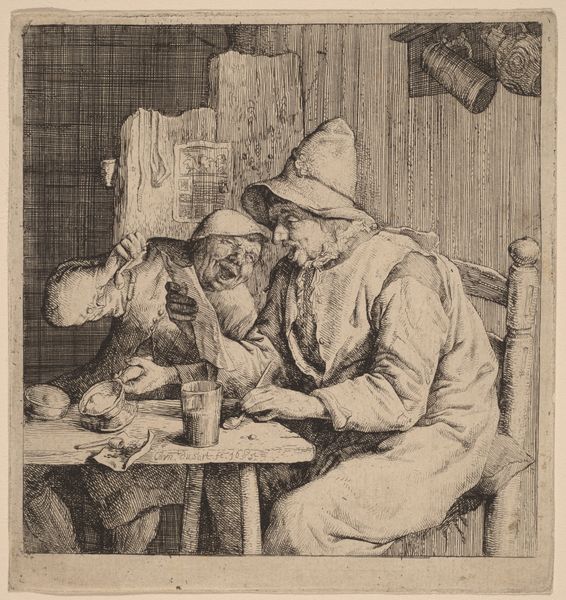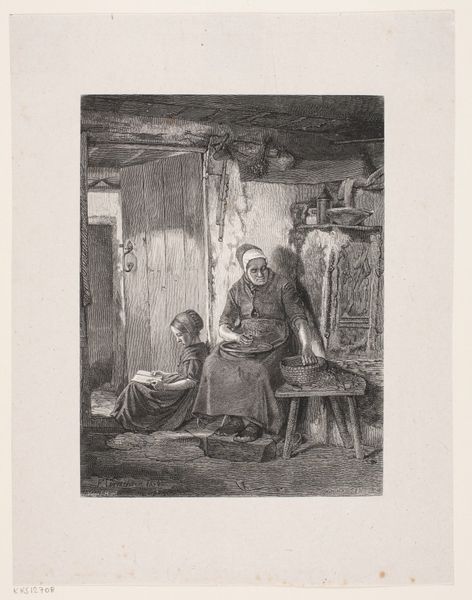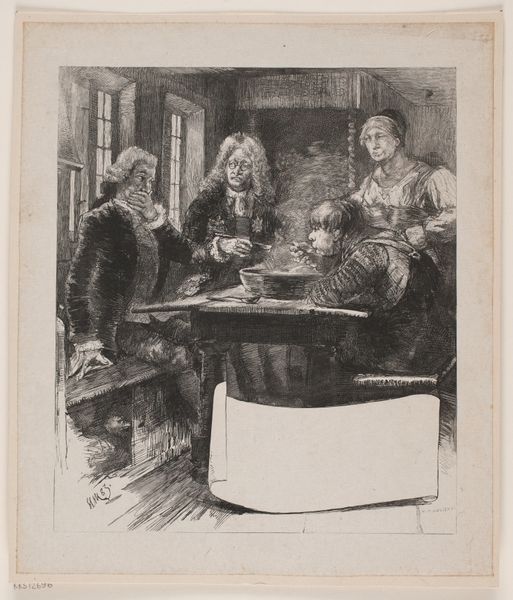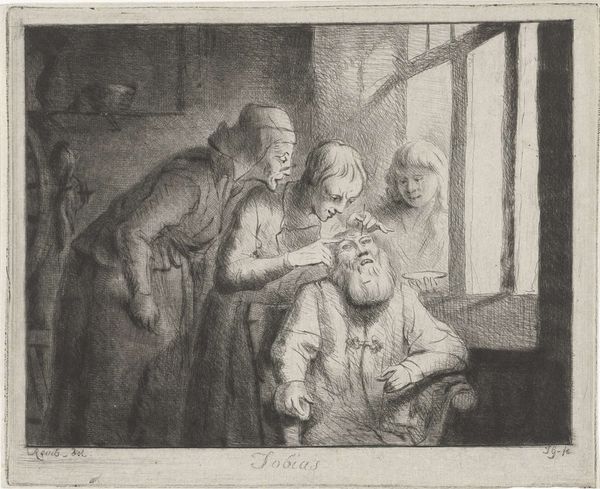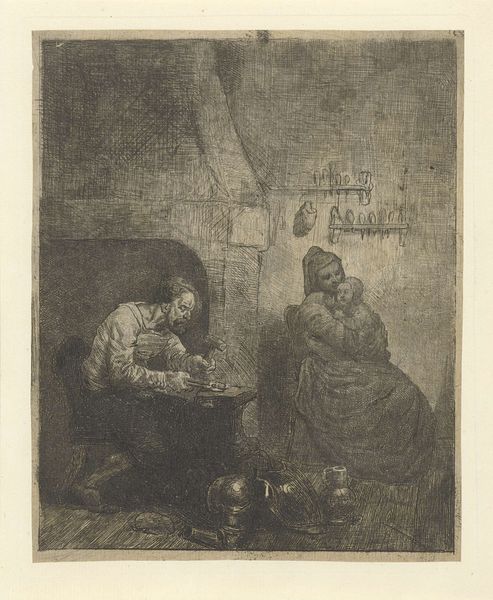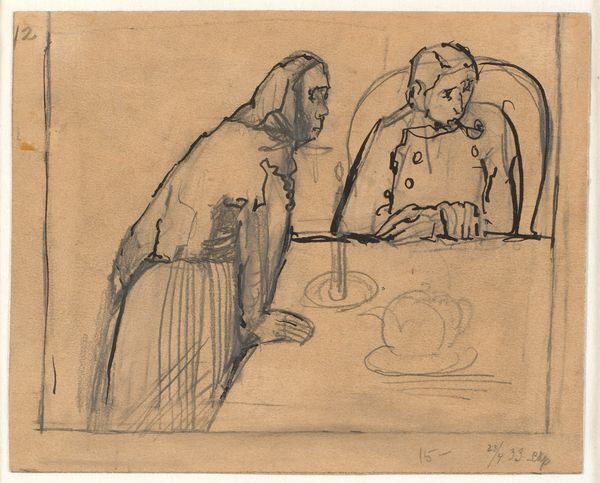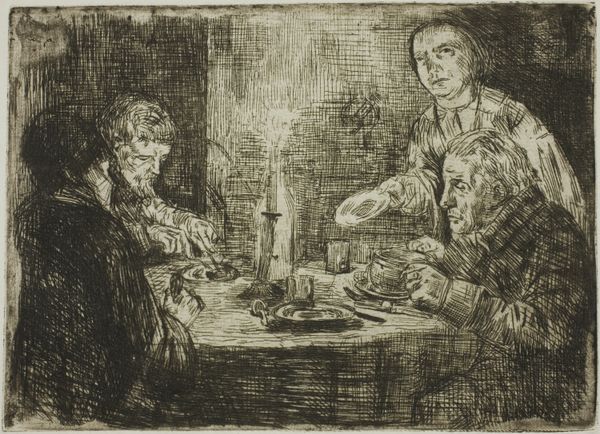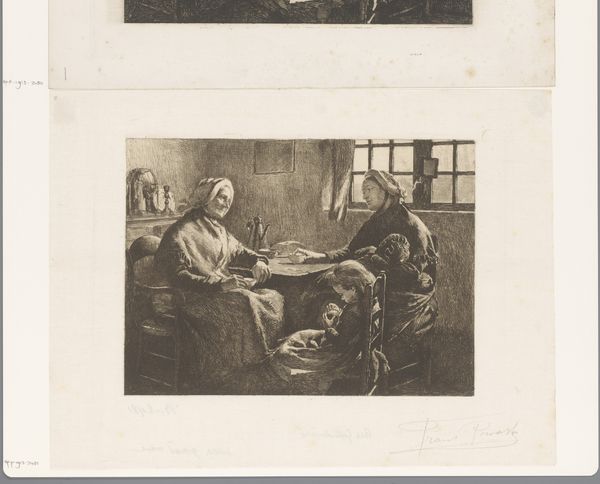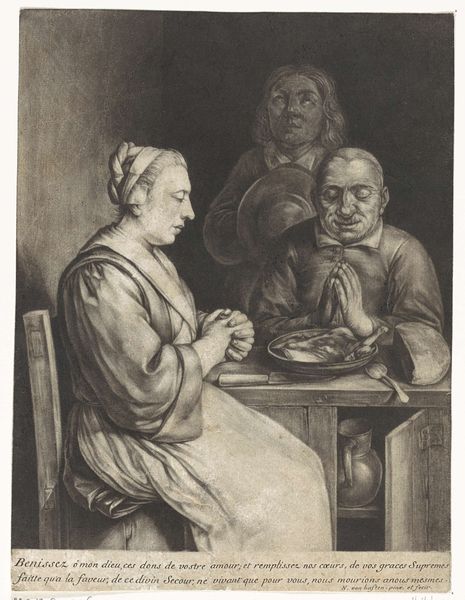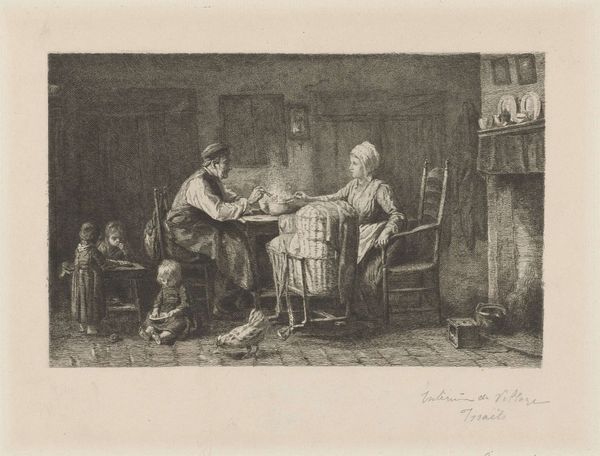
print, etching
#
portrait
# print
#
etching
#
dog
#
landscape
#
genre-painting
#
history-painting
#
realism
Dimensions: height 103 mm, width 125 mm
Copyright: Rijks Museum: Open Domain
Curator: Right now, we're standing in front of "Prayer Before the Meal," a captivating etching crafted by David van der Kellen sometime between 1814 and 1859. Editor: It's stark, isn't it? The muted tones evoke such quiet solemnity... it feels incredibly intimate, almost as if we’re intruding on a very private moment. I can almost feel the silence in the room. Curator: It’s interesting that you mention intrusion. This work speaks to the social hierarchies and religious values that informed so many genre paintings and etchings of the time. The subjects, seemingly a husband and wife, pause to offer a moment of prayer at their modest table. But is it a snapshot of piety or a comment on economic conditions? Editor: That’s a complex tension, isn't it? I see it in the contrast. She's deep in prayer, so connected, but he's sort of watching her... There's a real awareness of each other. I think the dog is so beautifully rendered—it reflects that feeling of gentle anxiety as well. What do you think the artist is trying to tell us about gendered roles within religious expression? Curator: Indeed, look at how their positions frame our interpretation. She, head covered, embodying devotion, versus his hand still lingering on his hat. We can understand this within the framework of piety being particularly valorized and imposed upon women's roles. It feels indicative of a broader system, don't you think? Editor: I couldn't agree more! It asks a poignant question of spectatorship. We’re meant to think about who this piece serves: does it hold a mirror to a segment of the population or merely reaffirm social biases for wealthier patrons? Curator: What's really stunning is that with the spare rendering and realism, the scene speaks to a collective anxiety in post-Napoleonic Europe: hunger, the uncertainty of work, and renewed emphasis on the power structures. Editor: So even a scene seemingly as humble as a couple praying before a meal is brimming with societal implications. Art is so rarely *just* what's on the surface. Curator: Absolutely. I will always feel this image encapsulates the way small everyday moments ripple into massive narratives. Editor: For me, it speaks to how visual language reveals more when we examine who's in control of the narrative. Now that's something to keep in mind.
Comments
No comments
Be the first to comment and join the conversation on the ultimate creative platform.
